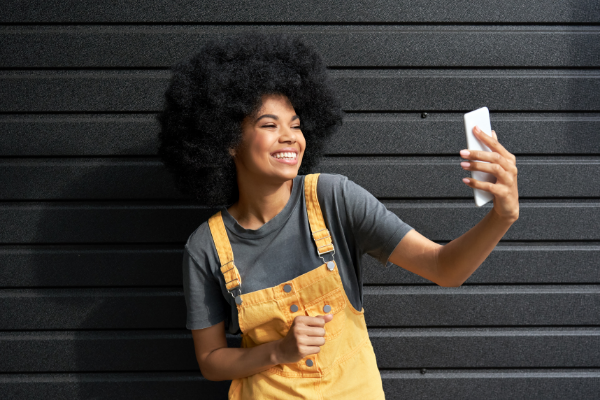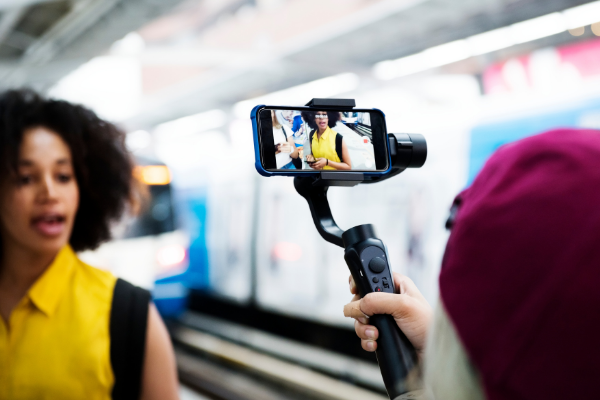Insights
INSIGHTS
All Topics
My Account
Charity guide to the different tiers of influencer
06 Jan 2022by Elaine Taylor
From nano to mega, here is our comprehensive guide to the different tiers of influencer
Influencer marketing is one of the fastest growing marketing strategies. Before the days of social media, influencer marketing simply meant celebrity endorsements. And for charities, particularly small- to medium-sized charities, securing a celebrity endorsement was no easy feat.
But now, thanks largely to social media, the definition of ‘celebrity’ has expanded.
Social media influencers are celebrities for the digital age. By partnering with an influencer, charities have the potential to connect with vast and loyal audiences.
Used in conjunction with traditional tried and tested marketing and PR tactics, supportive and enthusiastic social media influencers can increase reach and engagement with a fundraising campaign, particularly among younger generations or target audiences.
But before you can start planning ways to attract and work with influencers, it’s helpful to know about the different tiers of influencer, and the ways each of them can benefit your campaign.
Nano (less than 10k followers)
Best for: Small charities. Targeting specific audiences. Profile raising.
Nano influencers are influencers with small, niche, and loyal followings. Don’t be dissuaded by their relatively small size. An influencer’s ‘influence’ is not measured by how far they can push content, but their ability to pull their community towards an action.
Where they lack in followers, nano influencers excel in engagement. Most nano influencers know their followers well, if not personally. As a result, the charities they choose to partner with can come across as more genuine, personable, and trustworthy.
For these reasons, partnering with nano influencers may lead to higher campaign engagement and better return on investment. But if you’re looking to target a specific audience with as wide a net as possible, consider partnering with more than one nano influencer.
Read our guidance on how to leverage digital influencers for your next charity campaign.
Micro (10–100k followers)
Best for: Small- to medium-sized charities. Raising awareness. Collective call to action.
According to Hootsuite, influencers with 15,000 followers have some of the highest engagement rates across all social media platforms.
This, combined with their average follower count, means micro influencers tend to be known for awareness raising abilities. However, case studies show that utilising the collective power of a number of micro influencers can garner powerful results.
Micro-influencers are easier to contact, build a relationship with, and to work with than influencers with higher follower counts. When searching for a micro influencers to partner with, however, it’s important to consider their follower to engagement ratio.
Influencers can buy followers, likes, and comments through automation and bots. If a micro influencer’s follower count is high, but engagement is low, this may be cause for suspicion. You want the micro influencers you partner with to be genuine and law-adhering.
Macro (100k–1m followers)
Best for: Larger charities. Content creation. Raising awareness. Impactful campaigns.
Macro influencers are influencers with established, sizeable followings. Because of this, partnering with a macro influencer can be a great way to raise awareness and deliver an impactful campaign.
In 2012, Refuge partnered with YouTube make-up artist Lauren Luke for a powerful video campaign with the hashtag #Dontcoveritup. The video was titled ‘How to look your best the morning after’ and served as a tutorial on how to cover up bruises and cuts with makeup.
By using an established authority within an interest area (the make-up artist) and mirroring a popular YouTube content format (the make-up tutorial), Refuge flipped a platform norm on its head.
The result was astounding. The video received over 2.5 million views and the campaign accrued more than 550 pieces of coverage across the globe.
In most cases, the macro influencer’s entire source of income is dependent on their social media presence. Or, they are actors, chefs, musicians, make-up artists, or models in their own right. Despite this, macro influencers may drive the most impactful return on investment compared to other influencer tiers.
For maximum impact, ensure the macro influencers either complement or are consistent with the charity’s mission. Think chefs for soup kitchens, or artists for heritage organisations.
Mega (1m+ followers)
Best for: Major charities. Mass awareness campaigns. High-level campaign engagement.
Mega influencers are influencers with celebrity status. Meaning that they usually are household names with huge reach and influence. Think your Marcus Rashfords and your Katie Pipers. For this reason, mega influencers are best for the largest charities.
Because of their status, mega influencers can launch awareness and engagement with a charity campaign through the roof. For example, when Love Island contestant Chris Hughes became the face of CALM’s #DontBottleItUp campaign, traffic to CALM’s website increased by 485%. Over 120 million social impressions and 1.4 million views of the #DontBottleItUp video were achieved.
The benefits of partnering with a mega influencer are obvious: they offer the largest impact potential and the greatest possible reach, without the time and management resources needed to achieve the same results with a team of numerous smaller influencers.
But, bigger isn’t always better. According to a recent study, audiences identify more with influencers than celebrities, feel more similar to influencers than celebrities, and trust influencers more than celebrities. What’s more, partnering with a mega influencer, isn’t without risk of backlash for charities.
Read our guidance on how to attract and work with celebrity influencers.
More on this topic
07 Mar 2025by Laura Stanley
An introvert’s guide to networking
27 Feb 2025by Laura Stanley
Charity Spotlight: Dr Anton Mari Lim, President, Yellow Boat of Hope Foundation
Recommended Products
Featured Products
Our Events
Charity Digital Academy
Our courses aim, in just three hours, to enhance soft skills and hard skills, boost your knowledge of finance and artificial intelligence, and supercharge your digital capabilities. Check out some of the incredible options by clicking here.


















